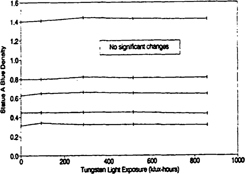
Topics in Photographic Preservation 1993, Volume 5, Article 7 (pp. 60-71)
Increasing demand for the exhibition of important photographs is an inevitable result of their rising market value, the growth of museum photograph collections and new levels of interest and connoisseurship among the museum public. Museum conservators are routinely asked to make pronouncements on what illumination levels, display duration and environmental conditions are “safe” for photographic prints on display. They must determine what relative humidity, temperature and light exposure conditions represent acceptably low risks for a variety of photographic processes. Additionally, they must act to protect photographs from physical damage during travel to exhibition sites and during display. The approach conservators use in making these recommendations should be conservative, should reflect the inherent weaknesses (and strengths) of the various processes and of individual prints and should result in installations which allow photographs to be seen in conditions which are as favourable as possible. The results of some real-time experimental light exposure studies and some actual exhibition experiences are discussed.
In order to provide meaningful information regarding the conditions under which original photographic prints should (or should not) be displayed, museum conservators must equip themselves with a broad knowledge of how light interacts with organic and inorganic materials and with a specific knowledge of how light interacts with individual photographic prints in the collections they oversee. The advice we provide on the advisability of display and loan must also estimate the risks inherent in packing, transit and handling during installation.
This approach to identifying responsible display conditions has nothing to do with incantation of the “50 lux maximum” formula or resort to a sanctioned set of intensity/duration conditions. The use of such standard policies may be expedient in overworked and understaffed institutional settings but they should never be thought by conservators to be a realistic evaluation of the optimum display conditions for a particular print.
The collection of photographs at the National Gallery of Canada includes items which cannot be exposed to light, even at a low level of illumination, for more than a brief period without suffering noticeable light-induced damage. Fortunately, there are relatively few items with this high sensitivity in the collection. Also present are prints which can withstand, without observable damage, display in a seven-venue touring exhibition extending over 19 months during which they will be exposed to approximately 460 klux-hours1 of UV-filtered tungsten incandescent illumination. There are a relatively large number of these stable objects in the collection, as well as a large number of photographs whose stability is somewhere intermediate between the extremes.
The conservator's role, in this context, is to provide the best possible determination of the relative degree of sensitivity which applies to a particular print and to provide housing and exhibition conditions that will optimize print stability.
Michalski's recent writings [1987, 1990a, 1990b] on the effects of display on museum objects point to the wide range of light-fastness observed in various materials and colorants. This factual information should be used in arriving at
… the institutional consensus (which) follows the same mix as the government's budget: one third politics, one third intuition and one third facts. This is not necessarily a bad thing, but I would like at least to keep the politics explicit, the intuition mature, and the facts current. [Michalski, 1990a, p.39]
In the case of photographic prints, we have the opportunity to supply current and relevant facts by accurately observing and recording the density of various image areas before and after display. [Wilhelm, 1981]
Romer has warned “…that we are squandering the largely unrenewable resources of our photographic heritage in an ignorant fashion” by subjecting unique vintage prints to display. [1986, p.24] This conclusion was supported by a densitometric monitoring study by Severson in which 38 prints in a touring exhibition were monitored before and immediately after exhibition and again after a dark storage period. [1986] Severson noted density changes after transit and exhibition in 21 of the prints monitored. The possible deteriorative agents noted were light exposure (estimated as a maximum of 156 klux/hours of ultra-violet-filtered tungsten incandescent illumination), poor air quality (unknown) and fluctuating temperature and humidities (crates exposed to high humidity at least once in transit).
The observations presented below are drawn from the author's light ageing trials and from exhibition experience. Compared to Romer and Severson's observations, they suggest less dire consequences for photographic prints exhibited in well controlled museum conditions. Before looking at these results we should briefly review the two critical factors which must influence our choice of display conditions: What level of illumination is necessary to see photographs on display?; What are the possible ways in which exhibition can cause deterioration in photographs?
Discussions with curators on exhibition lighting levels inevitably centres on whether the light level is sufficient for the image to be seen (and seen well). The scientific investigation of vision can give us little help here since there appears to be no optimum illumination level at which visual acuity and colour discrimination reach a plateau. [Boyce, 1987, p.55] While 50 lux may allow a younger person to discriminate colours in a low reflectance object, it may not be sufficient for a viewer over 55 years of age to do so. As illuminance increases to 1000 lux and beyond, visual acuity and colour discrimination clearly improve.
Viewer's opinion on the “quality” of illumination, as studied by Loe [1987], does not give clear direction either. Michalski points out that these viewer's “…judgement of the “quality” of lighting shows little improvement between 50 lux and 400 lux”. [1990b, p.584]
In one instance, a curator of photographs has insisted that a room with a relatively high level of north daylight is inappropriate for the examination of photographs, this strong illumination tending to wash out and flatten tonal details of both colour and monochrome prints.2 This is not surprising since most photographers produce and edit their own work under moderate levels of artificial light, often from tungsten incandescent sources.
Michalski [1990b, p.584] summarizes the visibility data by saying:
— We see most of what there is to see by 50 lux. This has been the standard argument of conservation.
— We see objects not only slightly better, but differently with more light (such as the brightness of colours).
Conservation must not deny that difference, or trivialize it. Our job is to explicitly predict the cost in deterioration….
Visible light and ultra-violet radiation (UV) potentially affect every component of the photographic print. These effects are briefly listed below.
– Image silver, no matter what its particle morphology or toning adjuncts, is not directly affected by light/UV exposure. However, some products of photo-oxidation of organic components (see below) may oxidize metallic silver [Eastman Kodak Co., 1985, p. 108; Reilly, 1986, p.103]; residual silver halide, such as that present in unfixed or partially fixed prints3, will darken when exposed to light; many of the silver-thiosulphate and other silver complexes which accumulate in poorly washed silver prints can be photo-oxidized causing staining or further reactions; silver ions, produced by the action of moisture and oxidizing agents, may be reduced by light exposure. [Eastman Kodak Co., 1985, p.84] The light-induced deterioration of polyethylene in resin-coated papers (see below) may affect image silver. [Wilhelm, 1992] The factors affecting oxidative-reductive deterioration of image silver has been reviewed by Hendriks. [1989, pp.645–650]
– Organic dyes comprising the photographic image or present as filter or sensitizers are subject to light-induced changes in density [Giles, 1973; Wilhelm, 1979; Schwalberg, 1990]. Dyes used to tint the paper support of some albumen prints are extremely fugitive. [Burgi, 1982; Reilly, 1986, p.106]
– The iron compounds which comprise cyanotype images may be faded by light exposure. This fading is partially reversible by dark storage. [Reilly, 1986, p.43]
– Proteins are subject to light/UV deterioration. Albumen is subject to bond-breaking and photo-oxidation by UV. [Messier, 1991, p.134] Gelatin, less sensitive than albumen, may be yellowed and embrittled by prolonged light exposure; this is unlikely to happen at museum light exposure levels. [Reilly, 1986, p.103; Eastman Kodak Co., 1985, p.84]
– Paper may be bleached and weakened by light (principally UV) exposure. Lignin containing papers may be discoloured. [Reilly, 1986, p.103, Michalski, 1987, p.10] Gelatin emulsions will absorb most of the incident UV energy and a baryta layer will block most incident light from reaching the paper support.
– Polyethylene in early resin-coated papers is subject to light-induced disintegration, catalyzed by titanium dioxide in the opacifying/reflecting layer below the image. [Parsons, 1979] Wilhelm states that this continues to be a problem with resin-coated prints. [1992]
– Monochrome and colour prints have frequently been heightened, spotted or painted overall with a variety of media. These may constitute the most fugitive components of a print. Note that the black colour of a paint or ink is no guarantee of its permanence; it may be composed of several fugitive colorants.
– Photographers frequently coated their prints with waxes in the 1930's and 1940's. Most pre-1988 black-and-white Polaroid prints are stabilized with a proprietary coating. [Wilhelm, 1992] The light stability of these and other organic coatings used on prints are not well characterized in the literature of photographic conservation.
Notwithstanding all the foregoing possibilities of light-induced damage, most photographs which are lent and displayed face the greatest risk through agents other than light. An incomplete list of these factors includes:
Presented first are the current (June 1992) results of ongoing light exposure studies under conditions which resemble those of museum display. Some additional data is drawn from densitometric records of prints belonging to the National Gallery of Canada which have been exhibited over the past several years.
Densitometry has been carried out according to Wilhelm's methods except that Status A filters are used rather than Wratten filters. [1981] A Macbeth TR924 densitometer measuring a 4 mm. diameter area was used to make all readings. Readings are accurate to ± 0.02 density units (DU). Differences between readings of 0.03 DU4 or less are not considered significant.
Visual, red, green and blue densities have been recorded for all prints studied. Blue filter density only is reported for monochrome prints, this being the most sensitive measure of changes in these prints. Red, green and blue filter densities are reported for colour prints.
In the light exposure study, the prints have been matted and framed under Rohm & Haas Plexiglas G (UF-1 filtration rating) and hung in a room where they experience a temperature of 22 ± 1°C and relative humidity of 46 ± 5% supplied by a museum air handling system equipped with particulate filtration and water scrubbing. They are constantly exposed to tungsten incandescent illumination which varies from 105 lux to 130 lux. This represents some 800 klux-hours of cumulative exposure to date. The prints studied have been acquired by the author or by the National Gallery of Canada for experimental purposes. A selection of the results are shown in Figures 1–7.

Figure 1: Gelatin-silver print (Alinari Studio)

Figure 2: Gelatin-silver print (Schaul Studio)
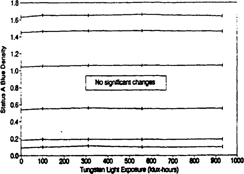
Figure 3: Gelatin-silver print, untoned (Azo paper, 1985)
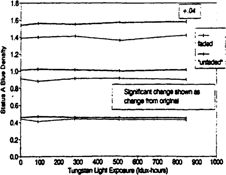
Figure 4: Two vintage albumen prints (Gamsby Studio)
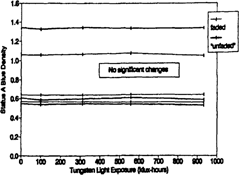
Figure 5: Two vintage albumen prints (Unknown studio)
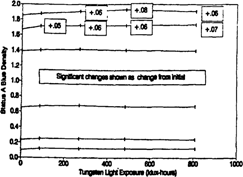
Figure 6: Modern albumen print, gold-toned (Chicago Albumen Woods, 1983)

Figure 7: Dye-coupler print (Ektacolor, 1987). Red, green and blue densities of, respectively, cyan, magenta and yellow patches.
Of the gelatin-silver prints monitored, the print by the Schaul Studio (Fig. 2) showed some transitory yellowing in one of the shadow areas monitored. The Alinari Studio print (Fig. 1) and the Azo paper step scale (Fig. 3) show no changes.
Figures 4 and 5 each show the results of exposure of a pair of albumen prints printed from the same negative, one relatively faded compared to the other. One of the “unfaded” prints shows some yellowing in the shadow area monitored. The modern step scale albumen print (Fig. 6) shows some yellowing in the higher density end of the scale. Examination of the graph may suggest that proportional yellowing is taking place at lower density steps but that these have not yet reached the 0.03 DU significant difference level.
The Ektacolor print, printed from a negative in 1987, contains various colour patches and a grey scale. Presented in Figure 7 are the red density profiles of two cyan patches, green density from magenta patches and blue density from yellow patches. The print shows transitory yellowing of the yellow patch shown here and of similar high density colour patches. After 800 klux-hours of exposure over 10 months the cyan dye loss has become significant.
Figures 8–15 present densitometric data gathered during actual exhibition and loan experience. These prints are from the collections of the National Gallery of Canada. In general, they have experienced less than 5 percent of the total exposure used in the preceding examples. They are matted, framed and glazed as described above. Temperature and relative humidity conditions are similar to those described above except for the Lisette Model print (Fig. 14) which is part of a touring exhibition.
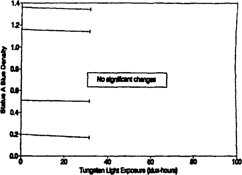
Figure 8: Sattod paper print (Benjamin Tumer, NGC 20622)
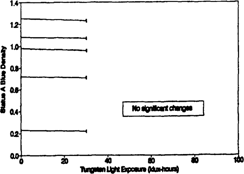
Figure 9: Light albumen print (Edouard Baldus, 1855, NGC 30804)
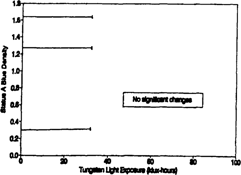
Figure 10: Albumen-silver print (Eugene Atget, 19227, NGC 21118)
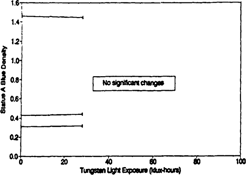
Figure 11: Matte albumen-silver print (Eugene Atget, NGC 21181)
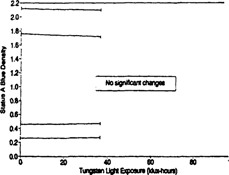
Figure 12: Gelatin-silver P.O.P. print (Eugene Atget, NGC 21226)
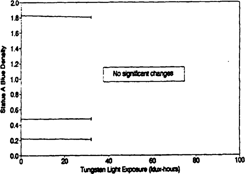
Figure 13: Gelatin-silver print, wax-coated (Walker Evans, 1931, NGC19240)
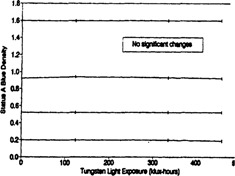
Figure 14: Gelatin-silver print (Lisette Model, 1930's, NGC 35101)

Figure 15: Dye-coupler print (Roger Martin, 1990, NGC 35527)
The two prints made in the 1850's (Figs. 8–9) were exhibited for a short period of time with illumination below 100 lux. They show no significant changes although in both cases the nominal density readings have decreased slightly.
Figures 10–12 show examples of Atget's principal printing media: albumen, matte albumen and gelatin printing-out paper. Again, no significant changes have been observed over the display period but the nominal density readings have decreased in the shadow areas of the matte albumen-silver print (Fig. 11) and the P.O.P. print (Fig. 12).
The coated Walker Evans print (Fig. 13) showed no significant changes during 32 klux-hours of tungsten light exposure.
Figure 14 is typical of the 20 prints which have been monitored over the course of the Lisette Model exhibition tour. These prints have been exposed to over 450 klux-hours of tungsten illumination as well as to extensive handling and transit in relatively uncontrolled environments; during this time no densitometric changes have been noted.
The dye-coupler print (Fig. 15) shows significant cyan dye loss in a neutral tone image area after 10 weeks which included a 29 klux-hour exposure.
Viewed generally, the results presented above indicate that many photographic prints are unaffected by display of limited duration at typical museum illumination levels. This should not come as a surprise since most photographic print components are remarkably light stable when compared to materials comprising, say, 19th-century oil paintings or watercolours.
The yellowing of the gelatin-silver print (Fig. 2) is unusual but not aberrant. The sensitivity of this print points out the risks of making general statements about the stability of particular processes; each photographic print may exhibit unique reactions determined by its unique history. Other gelatin-silver prints (Figs. 1, 3, 12–14) show no significant changes during display; the possible trend shown by the P.O.P. print (Fig. 12) would be consistent, if confirmed, with the greater tendency of photolytic silver to be affected by oxidative-reductive deterioration due to the higher surface/mass ratio of its particles. [Lavedrine, 1991, p.8]
The 19th-century salt and albumen prints shown in Figures 5 and 8–11 show no significant changes during display. The light sensitivity of the added matting agent in Atget's matte albumen print (Fig. 11) [Cartier-Bresson, 1987] is not well characterized. The yellowing in two of the albumen prints (Figs. 4 and 6) may be related to Severson's observation that albumen prints in excellent initial condition tend to lose density more readily than prints in inferior condition. [1986, pp.40–42] All those prints which show trends - as yet below the significance level - should be monitored closely at the time of their next exhibition in order to confirm or discount the indications of high light sensitivity.
The evidence from the dye-coupler (chromogenic) colour prints is variable. The test print (Fig. 7) shows a remarkable degree of light stability, cyan dye loss only becoming evident after a relatively long period, while the exhibition print (Fig. 15) shows substantial cyan dye loss over a brief period. Severson's data also shows wide variation between individual prints; his sample #26 shows no density changes while sample #27, by the same artist and dated to the same year, shows a 10% loss in one of the dyes in a mid-tone area. [1986, p.41]
The photograph conservation literature is consistent in indicating that dye-coupler prints fade during display but observations on the nature and rate of these changes vary widely. Wilhelm shows a 0.05 DU loss in a cyan shadow area of a 1970's-vintage Ektacolor 37RC print exposed to some 5,000 klux-hours of minimally filtered daylight over a year. The average daytime illumination in this case is 1.3 klux. [Wilhelm, 1979, p.120] In a subsequent publication Wilhelm shows 20% loss of magenta dye (from 0.60 DU) in an Ektacolor Plus print after a 23,300 klux-hour exposure using a 21.5 klux fluorescent source. [Schwalberg, 1990, p.44] Anderson and Larson cite accelerated light fading studies of Ektacolor 74RC prints using a 5.4 klux fluorescent illuminant in which an exposure of 2,600 klux-hours produces a 3% magenta dye loss from a neutral patch with an initial density of 1.0 DU. [1987, p.53] In a study following Ektacolor 74RC prints displayed under an average illumination of 214 lux from mixed sources, they indicate that the 5% cyan dye loss observed after 4 years is due to dark fading rather than the result of light exposure. This phenomenon is also noted in the older Ektacolor 78RC paper. [Anderson, 1987, pp. 50, 54]
What of changes not observable using densitometry? These include changes below the threshold sensitivity of the densitometer and changes such as embrittlement and cracking which are not measured by a densitometer.
Instrument insensitivity is a real problem, particularly for observing changes in low density areas. The best a conservator can do is to be aware of potential fading trends and treat these suspect objects cautiously. Higher sensitivity for print monitoring could be achieved with colorimetry using a UV/Visible spectrophotometer or with digitally based electronic imaging. These technologies may eventually replace densitometry but this will prove a difficult changeover for those of us who have invested heavily in densitometric monitoring programs.
As for changes which are not quantifiable using available instrumentation, the acute visual memory of a conservator or curator is the ultimate record.
The significant changes observed by Severson after some 150 klux-hours exposure during a one-venue tour must make institutional conservators cautious in specifying display conditions for photographic prints in their collections. However, neither Severson's data nor those presented here suggest that ALL photographs are damaged by display. On the contrary, some photographic prints appear to have superior light-fastness to all other two-dimensional pictorial media.
Reliance on institutional or departmental standard policies allows politics to play too predominant a role in this regard, ignoring the particular characteristics of a print. Even generalizations about photographic processes can be misleading or mistaken in particular cases. Illuminating all photographs at 50 lux will critically degrade the visibility of some images for all viewers and will degrade the visibility of all images for some viewers, particularly those over 50 years of age. Standard time limits on the length of loan or the number of venues allowable for loan ignore the variability in the quality of illumination and other environmental factors to which a travelling exhibit will be exposed. These are the factors which conservators must understand and evaluate in order to make meaningful recommendations. Michalski says that “…conservators could drop the role of «lighting police» and instead become expert counsel, if they are expert.” [1990b, p.586]
For photograph conservators, becoming expert and maintaining that status includes the implementation of a reliable, well calibrated monitoring program, using a densitometer or another colour measuring device. This will allow the creation of an object-level record of display, storage and colour change history. This data is required if informed and confident recommendations are to be made. Supplementing this is any information known (or guessed) about the processing treatments used to produce a particular print.
Prior to the collection of colour change data it may be advisable to initially recommend only limited exposure, say 30 klux-hours, for “suspect” material such as dye-coupler prints, early salted-paper prints, cyanotypes, painted prints or pristine albumen prints. Loan agreements for this type of uncharacterised print might be designed to provide for extension of the loan conditional on monitoring of the print at its home institution after one or more venues in a travelling exhibition.
All prints should be monitored immediately on return from display and again before subsequent display in order to determine colour changes that are independent of light exposure. This is particularly important for colour photographs.
Material that has been recorded as having undergone substantial colour change during display should be regarded as light sensitive and recommendations for subsequent display (or restriction) should explicitly state the losses predicted for a given exposure. This is a much more effective strategy for protection of sensitive images than blanket prohibitions. Exposure levels for sensitive objects can be drastically reduced by installation of simple viewer-operated curtains or automatic light controls.
Material that has shown itself to be light stable should be favoured with higher illumination (to a limit of, say, 300 lux) and with longer display periods, where requested.
In all cases:
If conservators base their recommendations for display and loan on accurate observation and careful forethought, the museum's collections, as well as the museum's public, will be best served.
The author would like to thank Boris Pretzel (Victoria & Albert Museum), Doug Severson (Art Institute of Chicago) and Henry Wilhelm (Preservation Publishing, Ltd.) for the comments and corrections they offered during the preparation of this paper.
Anderson, Stanton, and Larson, George. 1987. A study of environmental conditions associated with customer keeping of photographic prints. Journal of Imaging Technology. 13, No. 2: 49–54.
Boyce, P.R. 1987. Visual acuity, colour discrimination and light level. In Lighting Pre-Print: A conference on lighting in Museums, Galleries and Historic Houses. pp. 50–57. London: The Museums Association.
Burgi, Sergio 1982. Fading of dyes used for tinting unsensitized albumen paper. Paper presented at the SPSE International Symposium on the Stability and Preservation of Photographic Images, Ottawa. Cited in Reilly, 1986, p. 112.
Cartier-Bresson, Anne. 1987. Techniques d'analyse appliquées aux photographies d'Eugène Atget dans les collections de la ville de Paris. Preprints: ICOM Committee for Conservation 8th Triennial Meeting, Sydney, Australia, Vol. II. pp. 653–658. Los Angeles: Getty Conservation Institute.
Eastman Kodak Company. 1985. Conservation of photographs. Rochester: Eastman Kodak Company.
Giles, C.H., Forrester, S.D., Haslam, H., and Horn, R. 1973. Light fastness of colour photographs. Journal of Photographic Science 21: 19–23.
Hendriks, Klaus B. 1989. The stability and preservation of recorded images. In Imaging Processes and Materials: Neblette's Eighth Edition. Edited by John Sturge, Vivian Walworth and Alan Shepp. pp. 637–684. New York: Van Nostrand Reinhold.
Lavedrine, Bertrand. 1991. The study of the microstructure of the silver grains in gelatin printing out paper during accelerated ageing. Topics in Photographic Preservation. 4: 1–18.
Loe, David. 1987. Preferred lighting for the display of paintings with conservation in mind. In Lighting Pre-Print: A conference on lighting in Museums, Galleries and Historic Houses. pp. 36–49. London: The Museums Association.
Messier, Paul 1991. Protein chemistry of albumen photographs. Topics in Photographic Preservation 4: 124–135.
Michalski, Stefan. 1987. Damage to museum objects by visible radiation (light) and ultraviolet radiation (UV). In Lighting Pre-Prints: A conference on lighting in Museums, Galleries and Historic Houses. pp. 3–16. London: The Museums Association.
Michalski, Stefan 1990a. Time's effects on paintings. In Shared Responsibility: Proceedings of a Seminar for Curators and Conservators. pp. 39–53. Ottawa: National Gallery of Canada.
Michalski, Stefan. 1990b. Towards specific lighting guidelines. In Preprints: ICOM Committee for Conservation 9th Triennial Meeting, Dresden, GDR, Vol. II. pp. 583–588. Los Angeles: Getty Conservation Institute.
Parsons, T.F., Gray, G.G., and Crawford, I.H. 1979. To RC or not to RC. Journal of Applied Photographic Engineering 5, No. 2: 110–117.
Reilly, James M. 1986. Care and Identification of 19th-century Photographic Prints. Rochester: Eastman Kodak Company.
Romer, Grant B. 1986. Can we afford to exhibit our valued photographs? Topics in Photographic Preservation 1: 23–30; and, Picturescope 32, no.4 (Winter 1987): 136–137.
Schwalberg, Bob, Wilhelm, Henry, and Brower, Carol. 1990. Going! going!! gone!!! Popular Photography (June 1990): 37–49, 60.
Severson, Douglas G. 1986. The effects of exhibition on photographs. Topics in Photographic Preservation 1: 38–42; and, Picturescope 32, no.4 (Winter 1987): 133–135.
Wilhelm, Henry 1979. Color print stability. Modern Photography 43, No. 2: 92 et seq.
Wilhelm, Henry 1981. Monitoring the fading and staining of color photographic prints. Journal of the American Institute for Conservation 21: 49–64.
Wilhelm, Henry 1992. Personal communication.
1 Calculation of total light exposure in lux-hour units can be made by using the factor of 3000 hours/year light exposure in a typical museum. [Michalski, 1990a, p.43] In this paper the total light exposure for a travelling exhibition is calculated by multiplying this factor by the actual display time (converted to years) and by the maximum illumination intensity.
2 J.W. Borcoman, Curator of Photographs at the National Gallery of Canada, prefers a space lighted with 150–300 lux tungsten incandescent to one with daylight illumination which varies between 300 and 2000 lux. In this instance both colour temperature and intensity are involved in the preference.
3 Included in this category are some early salted paper prints, some commercial proof prints and “stabilization-processed” prints. Some calotype negatives are incompletely fixed and will fade if exposed to uninterrupted exhibition illumination.
4 √ (0.022 + 0.022)